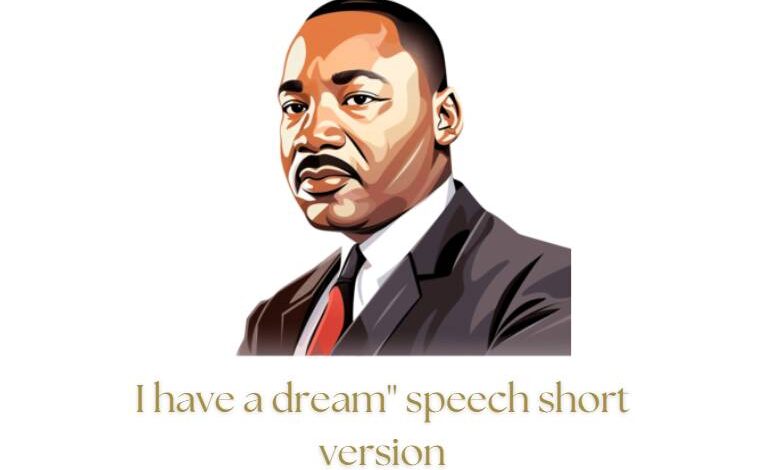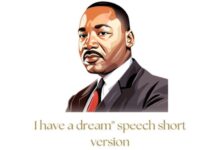I have a dream” speech short version for MLK Day 2025

The “I Have a Dream” speech, delivered by Dr. Martin Luther King Jr. on August 28, 1963, at the Lincoln Memorial in Washington, D.C., is one of the most iconic speeches in history. Its powerful rhetoric and heartfelt vision for equality still resonate with audiences worldwide. While its full version is packed with rich and moving language, a shortened version can allow readers to gain a glimpse of its essence and understand its main themes of hope, justice, and unity. This post provides a concise summary of Dr. King’s legendary speech, highlighting its key points, values, and impact. Use this as a springboard to discover why these words continue to inspire generations.
“I Have a Dream” Speech Short Version
Dr. Martin Luther King Jr.’s speech was delivered during the March on Washington for Jobs and Freedom in 1963, a protest held to draw attention to the racial injustices and inequality faced by African Americans. It was, however, more than just a demand for basic civil rights. It was a soaring call for a future where harmony, justice, and equality are not just ideals but realities. The speech cemented its place in history not just because of its content, but because of King’s distinctive oratory style. The repetition of phrases like “I have a dream” and “Now is the time” acted as rallying cries, giving power to both his message and his movement.
Key Highlights of the “I Have a Dream” Speech
The speech’s brilliance lies in how Dr. King seamlessly weaves hope, history, and an actionable call for change into a cohesive narrative. Below is a condensed summary of its most significant parts.
America’s Broken Promises
Dr. King begins by referencing the founding documents of the United States—specifically the Declaration of Independence and the Constitution which guaranteed “life, liberty, and the pursuit of happiness” to all Americans. He highlights that these promises were not kept for African Americans, an injustice he describes as America giving “a bad check” to its Black citizens. This reminder of unfulfilled promises sets the groundwork for his argument that action can no longer be postponed.
The Fierce Urgency of Now
One of the speech’s most famous sections calls for immediate, decisive action to end racial injustice. Dr. King passionately states, “We cannot be satisfied” until fairness prevails in all aspects of American life—from voting rights to housing and employment.
He highlights that change must come peacefully, emphasizing that the movement would not stoop to hatred or violence. Instead, it would rely on persistence and moral strength to achieve lasting equality.
The Vision of an Integrated Future
The heart of the speech lies in Dr. King’s repeated refrain, “I have a dream.” With these words, he paints a vivid picture of an inclusive country, free from prejudice and division. Some of the most memorable parts include dreams where:
- His children will “not be judged by the color of their skin but by the content of their character.”
- Formerly hostile states of oppression, like Mississippi, transform into beacons of freedom and fairness.
Faith in Progress
Dr. King conveys a deep faith in the potential of the American people. He asserts that the struggle for equality will ultimately succeed, declaring, “I have a dream today!” His optimism resonates throughout the speech, urging listeners to remain steadfast despite the obstacles ahead.
Call for Unity
The speech concludes with a unifying vision where people of all races and religions join hands as one. Referencing the patriotic song “My Country, ‘Tis of Thee,” King envisions a future where freedom rings “from every mountainside.”
The Lasting Impact of the “I Have a Dream” Speech
Dr. King’s speech was a turning point in the civil rights movement and helped propel the passing of landmark legislation, including the Civil Rights Act of 1964 and the Voting Rights Act of 1965. Beyond its immediate results, the speech’s message of equality and justice has transcended generations and continues to inspire movements for social change worldwide.
Organizations, leaders, and everyday citizens still draw from Dr. King’s words to advocate for a more just and equitable society. Schools, workplaces, and community groups revisit his message to remind us of the importance—and necessity—of diversity, inclusion, and respect.
